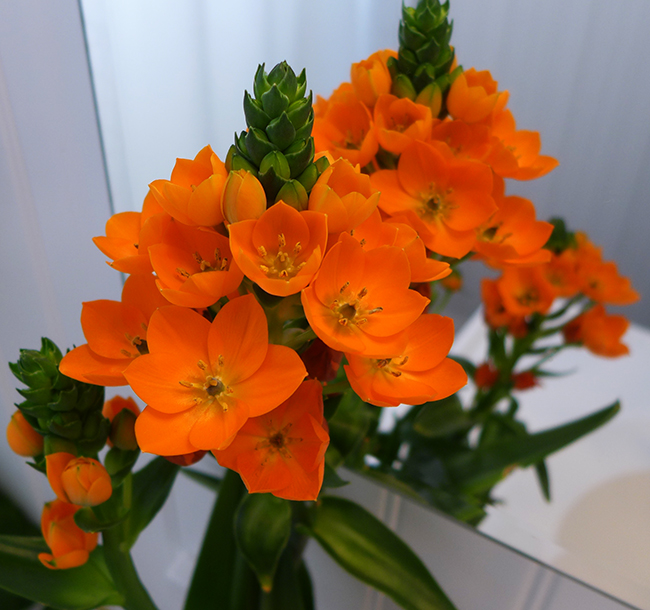Charlie vs. the Seedlings:
"I really want to want to eat 'em, mom. Maybe just a nibble?" - Charlie
Snooze, ya lose!
That's been my philosophy for many years, now. Prevents me from getting frustrated with folks who are all talk and no action.
Whenever someone claims they want to start a garden, I jump at the chance to help them plant something.
And, it's high time to be starting some happy seeds!They look very similar, now, but these are 3 very different heirloom tomatoes.
They produce fruit early, mid-season and late.
Snooze, ya lose! If that person begs off planting, busy doing other things, as this gal did... then I get to start some veggies for my own garden! Which is what kept me busy this morning.
Let's test your knowledge. Three types of seeds, are resting on this plate. One's a gimme. But, what about the other two?
Do you know what they are?It's been a blustery week of high winds and chilly temperatures.. the kind of weather that inspires a good, lazy day indoors.
In my backyard, the elk are the first sign of spring.
But, there is work to be done. There's always work to be done.. and it's not nearly as cold out there as it sounds with the wind battering the house.
Sable's on a diet! (Better her, than me.)
 |
| Second sign of spring: muddy horse. |
Each day, this week, I bundled up and trudged through the mud, to visit my beloved horse, Sable.
Who has turned into a roly poly pig.
Did you know that the best way to keep a horse warm in the winter is to feed them hay? The simple process of digesting food produces heat which keeps them warm.
This was a particularly harsh winter. So, I have a particularly fat horse!
No matter the weather, each day I would walk her out to the meadow, (to socialize her back into the human world.) We bond, while she nibbles on fresh green shoots.
That, I suppose, sounds counter productive but, we women know the quickest way to drop some pounds is not starvation; it's exercise. She'll shed that weight as soon as we start riding. I'm pretty confident she'll shed more weight than I will! :)
I hate the filthy remnants of winter. The mud, the mess, the dull, brown landscape.. can't even bear to show a full size photo of the barn, it's so dreary out there.
But, hey! What's that?
Tiny, Mertensia Alpina ~ my most beloved wildflower ~ has awakened in the meadow. Just in time for spring.
Yep. It's spring. One day early this year, because of February's extra day. But, none too soon for me.
Happy Equinox, everybody!
~ kate
Whoops! Almost forgot. Here's the answer to that burning seed question:
1) Pumpkin, of course. But, not just any pumpkin! A 300 pound pumpkin! (If I'm lucky.) I thought I'd plant a couple next to the street, where everyone can watch them grow to magnificent proportions.
Tip: if bigger is better, in your mind, remove all the fruit, except for the healthiest one. Lack of competition, on the vine, is how they grow so big.2) Brussel Sprouts.Hard to imagine a seed the size of a pin head can produce a gigantic stalk of Brussels, but they can. It just takes awhile. (110 days, best to start indoors.) This is an early,
very cold hardy variety, called Nautic, with a sweeter, nuttier taste than the ones you'll find at the supermarket. Easy grower in the mountains.
3) Beets!
Beautiful Chioggia beets. An Italian heirloom from a town, of the same name, near Venice.
Why is it called Equinox?Because night and day are nearly exactly the same length - 12 hours - all over the world. In Latin, it literally means 'equal night' (equi = equal and nox = night). Since biblical times, Spring Equinox has been the gardeners' call to action ~ to welcome spring by starting some happy seeds.

















































